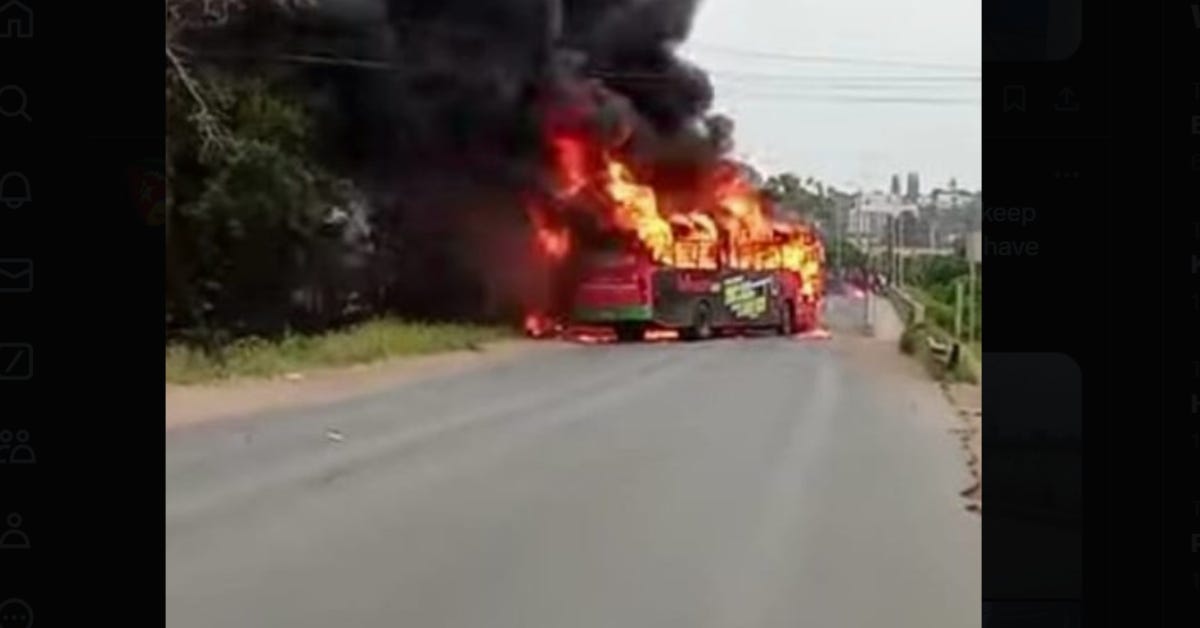Project Mozambique Part II: Mass Protest
At a bar in a remote holiday destination, a man in his early 20s sat with his back to the wall-mounted television. When I asked him, “Is this live?” his response was more than I bargained for...
See Project Mozambique Part I for context.
“This guy,” he said, nodding toward the official on the TV. “This guy is part of FRELIMO.”
“FRELIMO is crooked,” he continued. “They changed the votes.”
He went on to say that the streets of Maputo were at that moment filled with rioters, and anyone wearing FRELIMO's signature red risked a swift beating from angry protestors.
He explained that the protestors were demanding an end to 49 years of bilateral economic agreements and foreign aid programs that had failed to trickle down to ordinary Mozambicans.
The man behind this growing rebellion was Venâncio Mondlane, who previously served both the FRELIMO party and its chief opposition, RENAMO (Resistência Nacional Moçambicana). He started his political party, Podemos ( which means: We Can), in time for the 2024 national election and claimed FRELIMO had stolen the vote and that he had won—an assertion that may sound like a reach until one sees the numbers that turn out every time he calls for protests.
“We’re going to sacrifice two days of our lives so that we can all demonstrate,” he said in one of his video addresses.
“And we don’t need to inform the police or the municipality. The country must stand still for these two days,” he continued. And it did, as the throngs of poster and flag-bearing protestors converged on Maputo.
In the days that followed, FRELIMO launched an investigation into Mondlane's whereabouts, as he was reason for serious concern, because when he called, Mozambicans heard him.
In an effort to control the growing dissent, FRELIMO blocked all social media platforms.
Mozambique may be one of the world’s poorest countries, but they are tech-savvy, and it wasn’t a day before social media was thriving anyway, thanks to free VPN services.
A week later, the block was extended to YouTube and Google, and a week after that, the internet was just switched off completely after 20h00, and only those who had access to a satellite connection were able to browse the internet.
But none of this worked, and the government abandoned its attempts at stifling communication before the year was out.
To better understand the ongoing crisis, its causes, and its effects, I spoke with people on the ground.
An hour’s drive from Maputo lies the village of Ponta do Ouro which is a popular destination for South African tourists. Just under an hour south is the South African border.
Ponta do Ouro thrives on seasonal tourism. Many of its businesses are owned by South Africans and cater primarily to visitors from across its southern border.
Among the locals is Sam, a manual laborer employed by a South African business owner. Sam speaks passionately about his country’s political turmoil and its people’s challenges.
“A war is coming,” he warned during one conversation. He referred to the ongoing conflict between an ISIS offshoot group terrorizing the country in the North.
“People are suffering there,” he said. “At night, they just come and [attack] families there.”
“The people there, they can't get food,” he continued. “When they (the terrorists) see a truck with rice, they just stop it and take the rice.”
“Me, I am suffering here too,” he said, gesturing to an unfinished structure that will serve as a backpacker hostel upon completion.
“To them (the besieged people of Northern Mozambique), I am rich. But I am not.”
He talked about the divide between the middle and upper classes that becomes apparent as soon as one sets foot in the country.
“All of the government officials' kids attend school overseas, and when they finish off, they walk into a car, house, and a job here in Mozambique,” he said.
“You always see them driving these big cars that cost more than a million while we are suffering.”
See “Project Mozambique Part III: A Future Bought with Blood—RENAMO”







